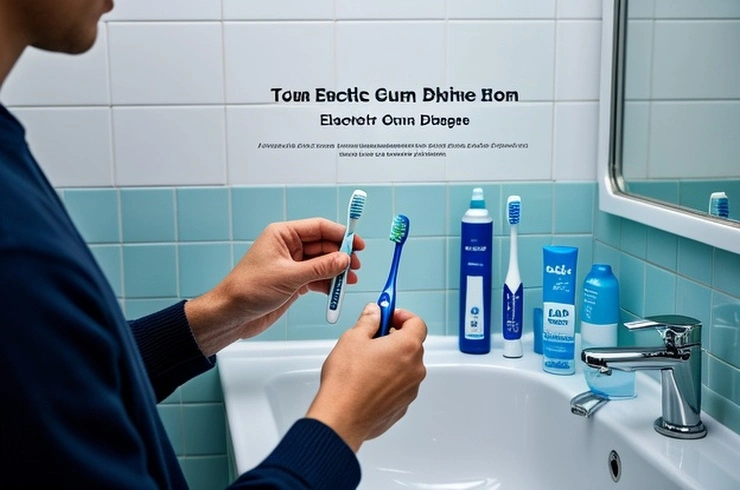
Maintaining good oral hygiene is paramount for both dental health and overall well-being. Gum disease, for instance, is a known risk factor for serious conditions like heart disease and diabetes. While we learn from a young age that regular toothbrushing is key, the sheer variety of toothbrushes available today can make choosing the right one a daunting task.
When nylon-bristled toothbrushes first appeared in the late 1930s, choices were limited. Now, stores offer extensive collections of both manual (disposable) and powered (electric) varieties, making an informed decision crucial.
General Tips for Choosing a Toothbrush
Regardless of whether you opt for a manual or powered toothbrush, certain characteristics are universally important:
Size: The ideal toothbrush head should allow easy access to all tooth surfaces. For most adults, a head approximately a half-inch wide and one-inch tall is easiest to use and most effective. Larger heads can make it difficult to reach areas like the sides and backs of molars. The handle should also be long enough for a comfortable grip.
Bristle Variety: Toothbrushes come with soft, medium, or hard nylon bristles. For the vast majority of people, soft-bristled toothbrushes are the most comfortable and safest choice. Medium- and hard-bristled brushes can potentially damage gums, root surfaces, and protective tooth enamel, especially with vigorous brushing. For added protection, ensure the bristles have rounded tips.
Expert Recommendation: To ensure quality, safety, and cleaning effectiveness, consult your dentist for a recommendation. Alternatively, look for toothbrushes — both manual and powered — that carry the American Dental Association (ADA) Seal of Approval. This seal ensures several things:
Bristles have safe tips and won't fall out under normal conditions.
The handle can withstand normal use.
The toothbrush effectively reduces plaque buildup and early-stage gum disease.
For powered toothbrushes, the ADA seal also means they've undergone independent lab safety testing and clinical trials to prove their safety for oral tissues, teeth, and any dental hardware.
Manual vs. Electric Toothbrushes: Making Your Choice
Provided you brush regularly with proper technique, both manual and powered toothbrushes can effectively reduce plaque and maintain gum health. Here's what to consider when deciding between the two:
Cost: Electric toothbrushes generally cost significantly more than manual ones, both initially and for replacement heads. However, if an electric toothbrush leads to cleaner teeth, the potential reduction in dental bills could offset the higher expense.
Likability: The best toothbrush is the one you'll use consistently and correctly. Some people dislike the vibrating sensation of powered toothbrushes, while others find them easier to maneuver for comprehensive cleaning, particularly those with limited mobility due to conditions like arthritis. Enjoying your toothbrush increases the likelihood of brushing for the recommended two minutes. Some electric models even include built-in timers.
Effectiveness: Scientific studies comparing manual and powered toothbrushes for plaque removal and gum disease prevention show no significant overall difference. However, evidence suggests that rotation-oscillation toothbrushes (where bristles move both circularly and back-and-forth) are more effective than manual toothbrushes.
Safety: While all ADA-sealed toothbrushes are tested for safety, specific individuals might find one type safer than another. If you tend to brush too vigorously, which can harm gums and teeth, a powered toothbrush might help you be gentler while still cleaning effectively. Some studies indicate that powered toothbrushes might temporarily increase bacteria in the bloodstream more than manual ones. While this isn't a risk for healthy individuals, further research is needed to determine any implications for people with certain heart conditions.
The Best Toothbrush for Children
When selecting a toothbrush for a child, the key is choosing one they will use correctly and consistently. Both manual and electric options are available for kids, often featuring appealing colors, popular characters, and even music to encourage brushing duration.
Here are some tips for choosing a child's toothbrush:
Ensure the toothbrush has an ADA Seal of Approval.
Select a child-sized toothbrush with soft bristles.
If your children are old enough, involve them in the selection process. This can make toothbrushing a more enjoyable and engaging activity.
Pro Tip
The content of the article is shared by netizens, please carefully identify it